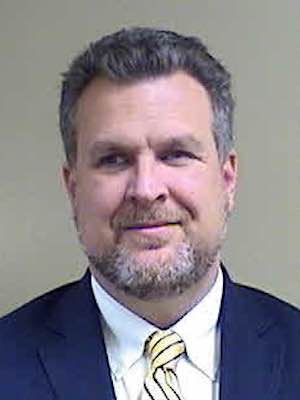On February 29, 2020, the United States reported its first death due to COVID-19. Seven months later, 200,000 had died nationwide, as the novel coronavirus swept through our unprepared country like wildfire.
Unfortunately, we forgot the lessons learned during the 1918 Influenza pandemic, making many of the same mistakes our great-grandparents did.
Pandemic responses are all about planning. Do we have resources and personnel? Where are they? Who should get what resources and when?
Our governments must do a better job of advanced preparation for disasters, epidemics and pandemics. It is too late to develop a plan once people start dying. Planning must start years, if not decades, in advance.
While the government has a macro role, individuals need to think through how they will handle specific types of disasters. My family keeps a case or two of water and around two-to-three-weeks of food on hand.
Buying milk, bread and cheese the day before a snowstorm might be a southern tradition, but in a disaster, it is not practical. We all remember the empty shelves and struggle to obtain basic household items. In addition, some families lack the economic resources to have emergency food, so there needs to be a plan in place to provide essential items to these households.
There is personal and community responsibility in disaster planning; it is not just the government. Without hoarding goods, each household should have a plan to survive a week or two and still be able to help those around us. This includes food, water, drugs, fuel and, yes, toilet paper.
Once a family has a basic disaster plan, they need to begin thinking about how to respond once a pandemic is in full swing.
After 17 years of working the emergency room in a busy trauma center, I can definitively tell you what happens when disaster or trauma strikes. People experience confusion, anger or irrationality. Sometimes all three at the same time.
It is only natural. The unthinkable has just happened, and the human brain is not designed to rewire itself on the fly.
Pandemics are the same way. During a disaster or pandemic, one asks a lot of questions but seldom gets very many confirmed answers. This creates cognitive tension, raising cortisol levels and blood pressure, and the stress and emotional pain demands relief.
We saw this the summer of 2020. People were confused, not knowing how to protect themselves and their loved ones. People were angry that the government did not stop a force of nature. People began acting irrationally, claiming the pandemic was a hoax or promoting the use of hydroxychloroquine.
Here is a time-tested piece of advice that we should remember: In the face of a disaster or trauma, take a deep breath, do your best to calm your mind, and then look for the most trusted and reliable information you can find. This applies to pandemic planning as well.
We need solid data to make wise decisions, and we must accept the world for how it truly is and not how we want it to be.
Wanting to end the pain caused by a disaster, people look for quick solutions that are not helpful or based in reality. Having a plan for how to respond, and knowing what the reliable information sources are, can alleviate a lot of personal anxiety.
The other area of personal responsibility during a disaster or pandemic is having a plan to address disaster fatigue and to provide self-care.
Unlike most traumas, a disaster or pandemic is not a one-day event. Hurricanes seed destruction for days and the clean-up takes months to years, while epidemics go on for months or years.
A snowstorm might be a nice chance to curl up on the sofa and watch Netflix for three days, but after that we are ready to get back to doing. After all, humans are social creatures and extended isolation creates emotional trauma.
During an extended pandemic, we need to plan to care for ourselves, our loved ones and our neighbors. This becomes especially challenging if someone is chronically ill or struggles with mental health.
Knowing that there are many at-risk individuals in our communities, it is a good time for our houses of faith and community groups began talking about the next disaster or pandemic.
We need to consider how individuals and families in our community coped with limited services and closures for the last several years.
We need to ask: What worked and what did not work? What divided the community? How do we safely provide connection and community? How might faith or civic groups mediate the negatives of necessary closures or lock downs?
Often, there is not a plan because no one foresees the problem. Now is the perfect time, while COVID-19 is still fresh in our minds, for these groups to sit down and discuss their possible role in the next pandemic.
We must not wait years or decades to formulate a plan. Otherwise, we’re likely to see the same mistakes we encountered during the current pandemic.





